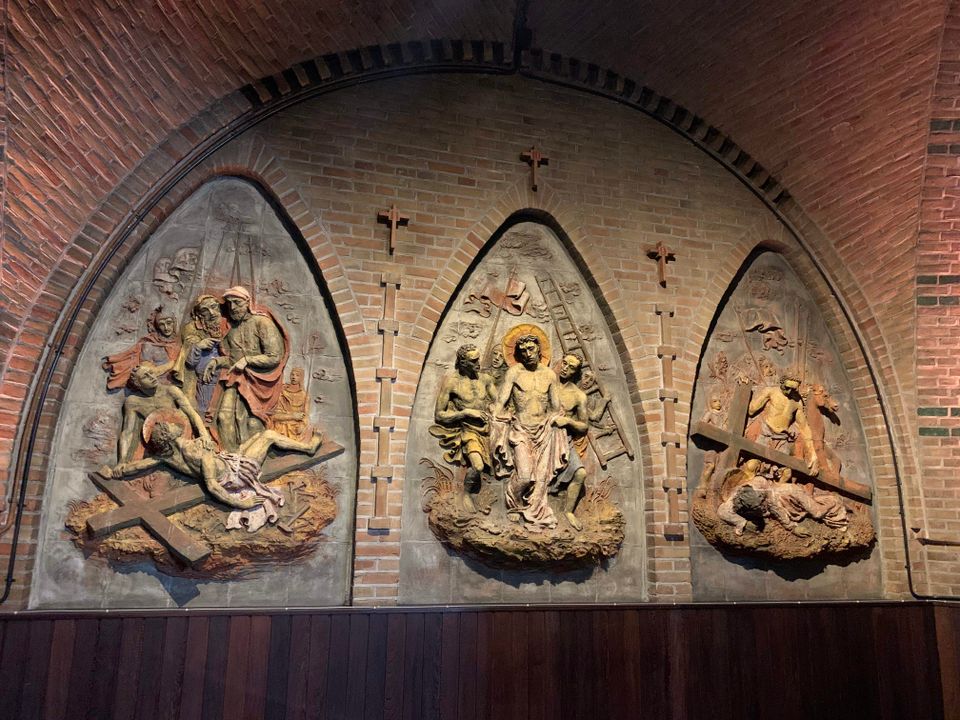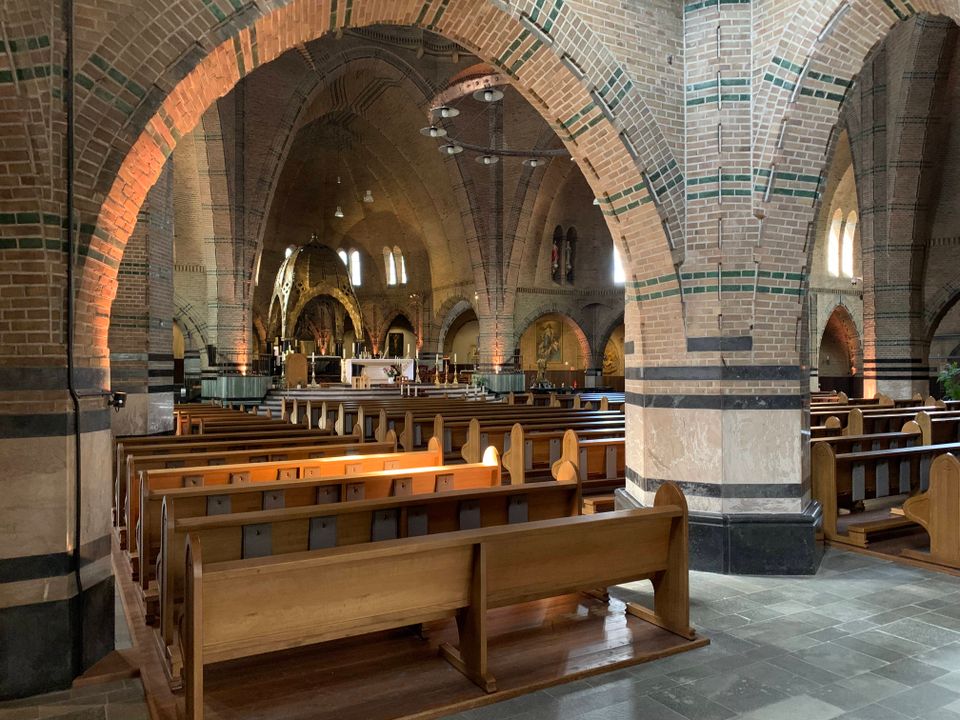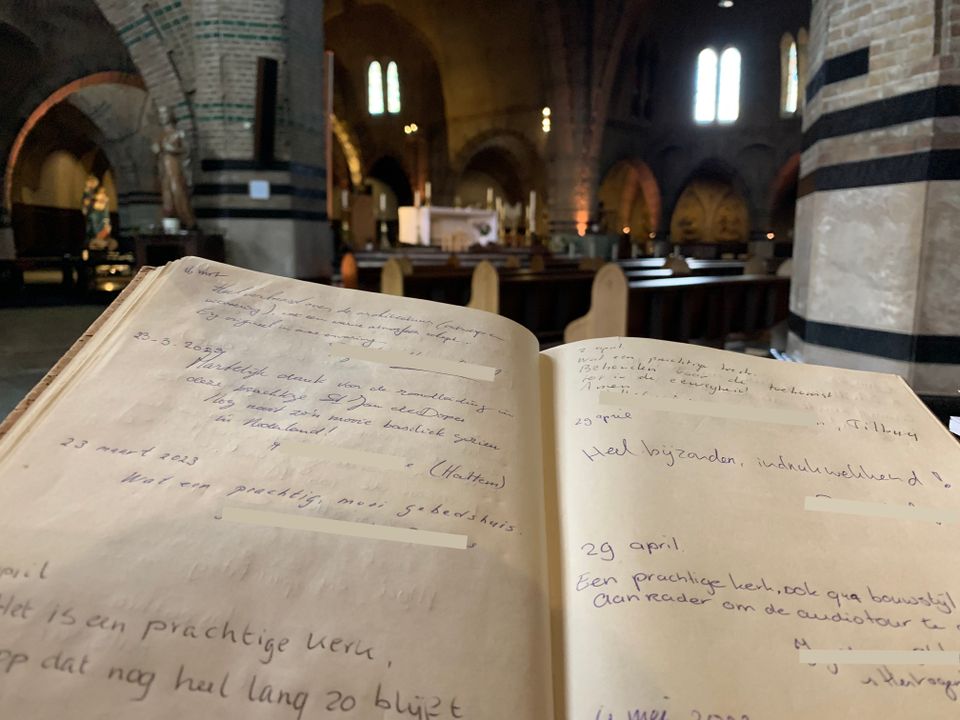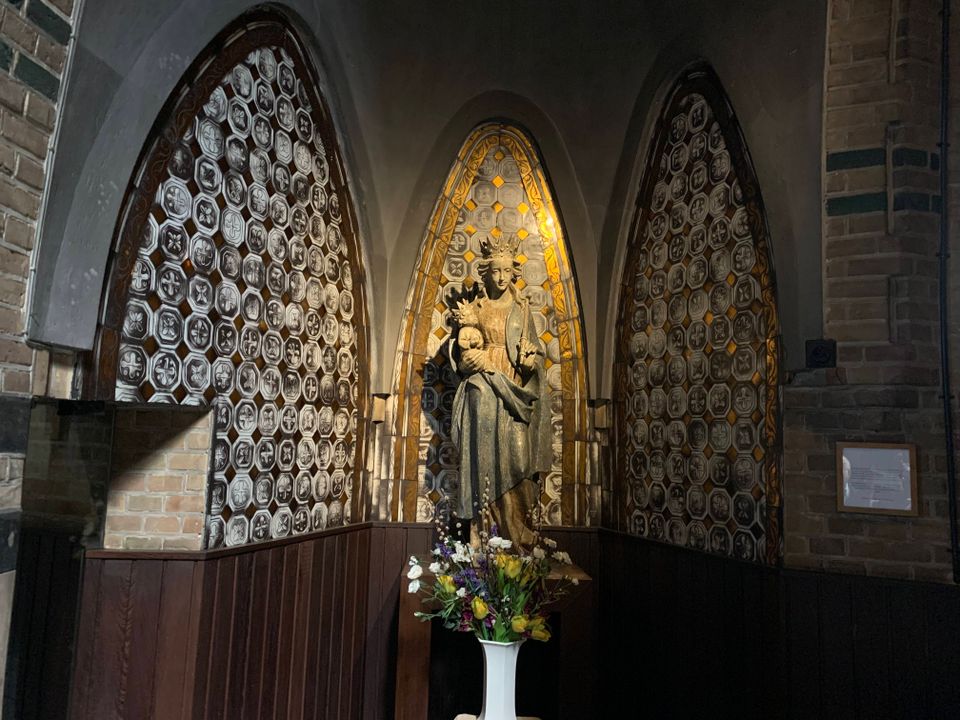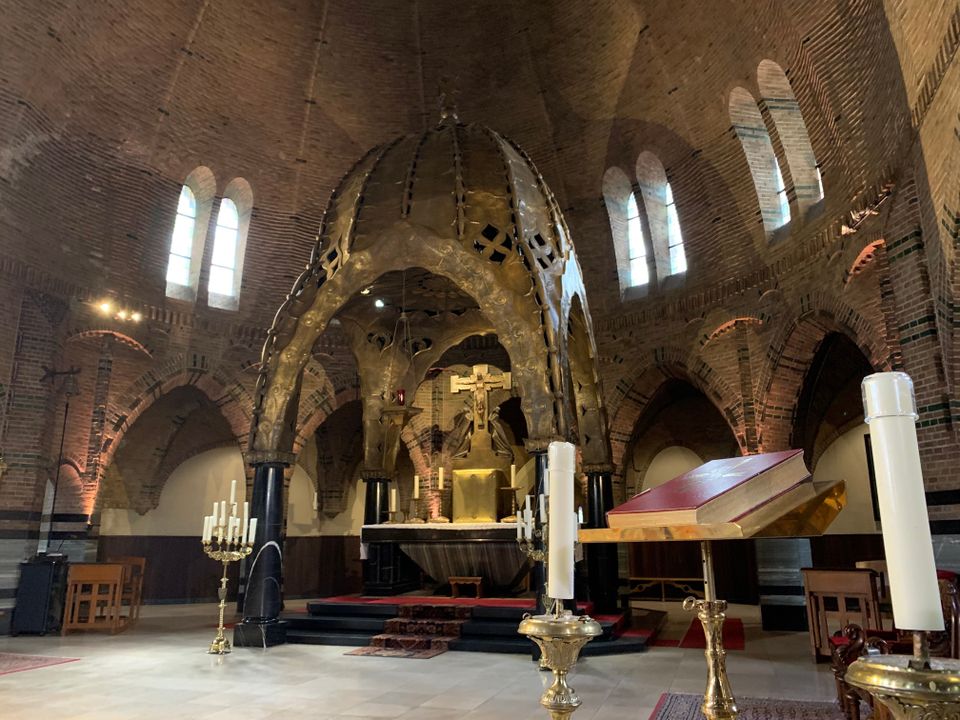Pearl of The Langstraat: Saint John the Baptist Church, Waalwijk
While working at the RBT office in downtown Waalwijk, my colleagues and I are faithfully treated every day to the sound of the bells of St. John the Baptist Church. You know, that beautiful church with the many copper domes. Today I have an appointment with Max van Mierlo, a volunteer with the Friends of St. John the Baptist Foundation. Just before I leave, I joke to my colleagues that when they hear the bells ring I might be hanging on to the clapper.
The door is wide open, which of course is often the case with a church. Yet I notice that when you pass by a church in everyday life, the threshold to actually go inside can be quite high. Strange really, because on vacation in Italy this doesn't bother me as much. I have seen the inside of more foreign churches and chapels than Dutch ones. Max is already waiting for me at the door: "Welcome to St. John the Baptist Church. How nice that you are going to write a blog." Max suggests we walk around the church right away and tell me a few things in the meantime. That seems like a good plan.
Right at the entrance is a counter. "This is where our hosts and hostesses welcome visitors on all afternoons that the church is open. They point out the possibilities to our guests. There is, for example, an audio tour available, but of course visitors can also choose to walk around freely. There are signs with more information at all the highlights in the church. "Just like a museum," I remark. "That's right," Max informs me, "the Saint John the Baptist Church is part of 'The Greatest Museum of the Netherlands.' A collaboration of the finest Dutch houses of worship to which 16 churches and 2 synagogues belong. But it is and remains first and foremost a building where Catholic worship is central."
We start the tour at a beautiful old confessional. Max tells me that it comes from the Abbey of Alden Biesen in Bilzen, Belgium, headquarters of the Teutonic Order since 1220, which was expropriated and then looted during the French Revolution (late 18th century). Fortunately, two confessionals with beautifully carved statues of saints were given a beautiful and dignified place here in Waalwijk. After admiring the beautiful carvings, we walk on.
At the back of the church is a statue of Mary. A beautiful picture: the rays of light from the stained-glass windows just do not reach the statue when I am there. According to Max, it is not the first statue that stood in this niche. Shortly after the inauguration of the church, some believers thought they saw the statue of Mary blinking. Pilgrims flocked to witness the alleged miracle; it became so crowded that the church had to be closed to the public for several days. It soon became apparent that a beam of light from the windows on Mary's face had caused the sight illusion.
Near the statue of Mary, in the middle of the memorial chapel (the former baptistery) is another beautiful stone baptismal font with a bronze lid. I understood from Max that this baptismal font is no longer used, but fortunately it can still be admired. "Nowadays, people use for baptism the beautifully carved wooden baptismal font that was already in use in the barn church after the Reformation since the 17th century. This movable baptismal font now stands at the front of the church next to the statue of John the Baptist, since the thirteenth century the patron saint of the Waalwijk parish churches," explains max.
Max takes me to a scale-model of the former nunnery "Our Lady in Huize Nazareth" that stood on the site of the current church since the 17th century. "The remnants that remained after the demolition of the convent were used - along with 8,000 m3 of sand - for the mound on which St. John the Baptist Church was built," Max explains.
After the model, we walk toward the altar. On the way, we pass the Stations of the Cross. A collection of 14 beautifully carved stations depicting the suffering and death of Christ. Max: "This Stations of the Cross is very special. The 14 terracotta works of art were created between 1940 and 1943 by Limburg artist Charles Eyck. Just before World War II broke out, Charles had started coloring the stations. During the war, he was forbidden by the occupying forces to continue this and after the war it was decided to leave it as it was. So now 11 stations are colored, and the other 3 still have the original terracotta color."
We pass a television screen on which is shown a presentation about the construction, architecture and symbolism of the church. Again, just like in a museum, I did not expect this.
Once we reach the altar, Max points out to me the many details and symbols. Too many to mention them all. The altar is "roofed" by a tent-shaped "ciborium. No, I didn't know that term myself; Max whispered that too to me. The ciborium was donated to the church by, among others, a number of wealthy Waalwijk tanners. In the details in the copper artwork, with some imagination, leather cow hides knotted together can be recognized. Wow, what a wonderful hidden treasure, right in the heart of De Langstraat, the region with a rich tanners' and shoemakers' history.
This blog will really get too long if I start writing down all of Max's details and stories about the church, its history and architecture. I would say, really go take a look there sometime. Stroll around on your own (with or without an audio tour) or ask the volunteers for a tour. It is well worth the effort. You will be positively surprised, just like me.
Did you know that...
...the church was built on a mound to symbolically "go up to the Lord"?
...the idea of building the church was conceived as early as 1908, but construction did not begin until 1923?
...the church was built in only 2 years?
...the largest dome is 41.5 meters high, and the minaret-like tower 67 meters?
...through all 19 domes, some 20,000 pounds of copper rest on the church?
...the funnel-shaped entrance symbolizes "open arms"?
...the Friends of Sint Jan de Doper Foundation makes every effort to preserve the church for future generations?
...free concerts and other activities are regularly held in the church?
...the church is open to visitors 5 afternoons a week?
...everyone is welcome for a free visit?
...it really is very much worth stepping inside once?
Click here for more info on St. John the Baptist Church.



